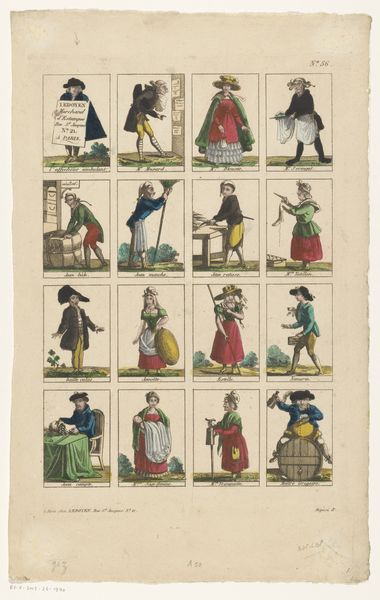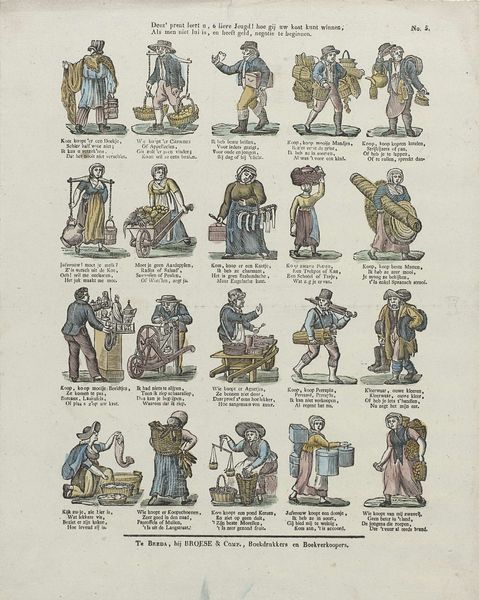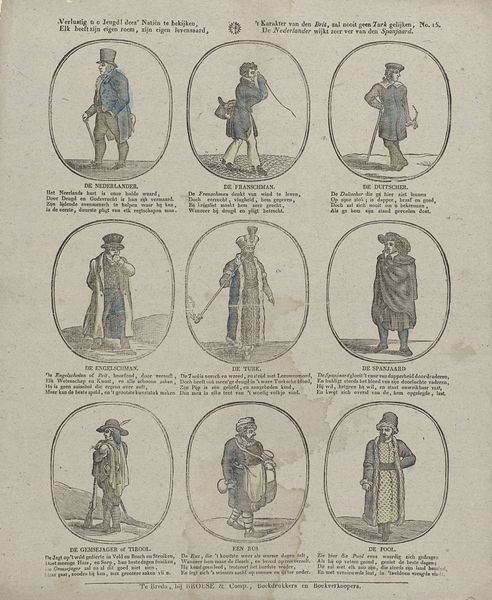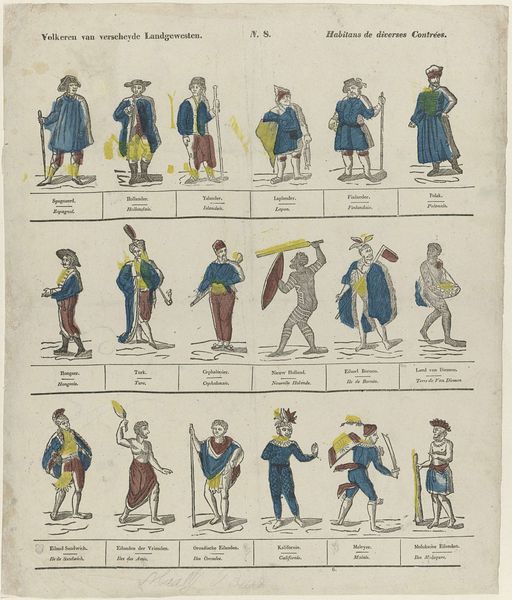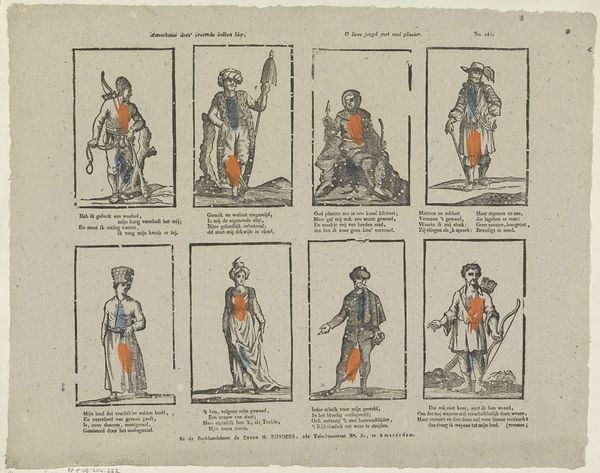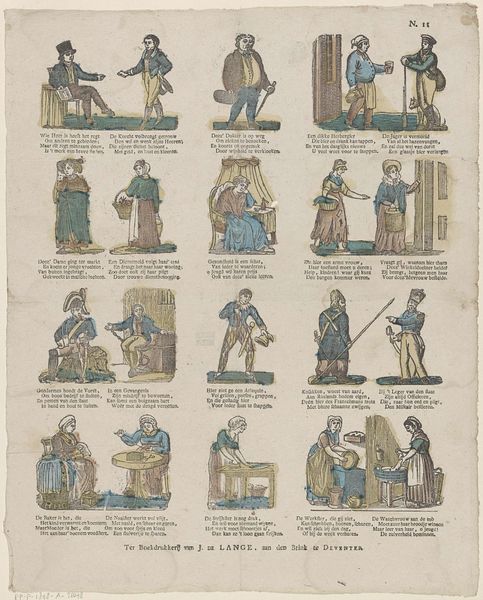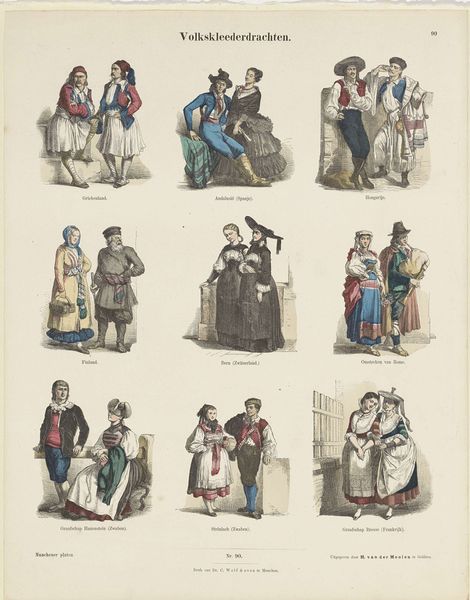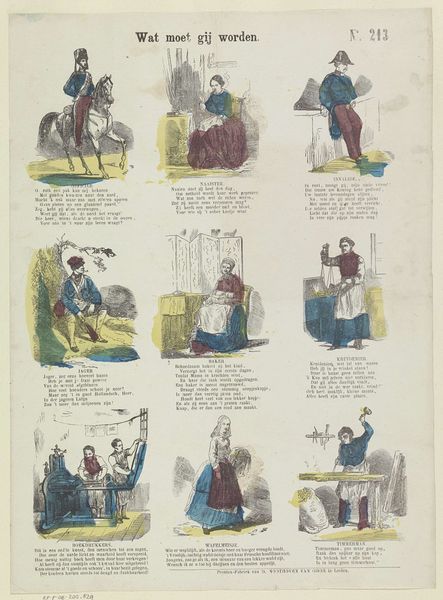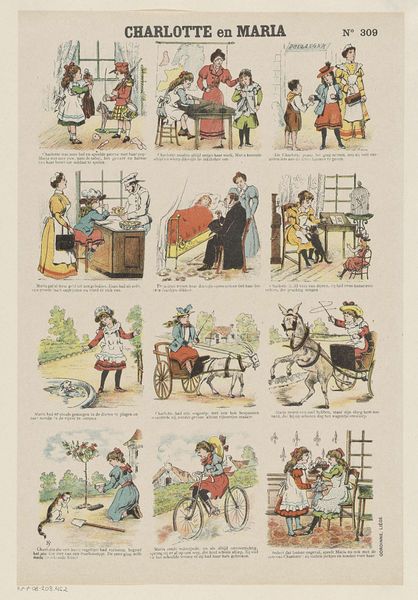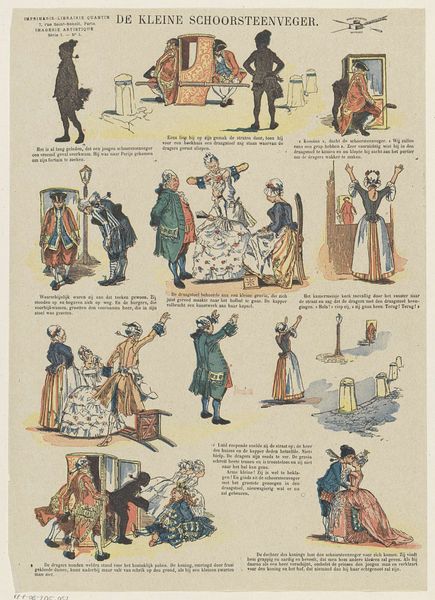
print, engraving
#
portrait
#
neoclacissism
# print
#
figuration
#
group-portraits
#
line
#
history-painting
#
engraving
Dimensions: height 380 mm, width 310 mm
Copyright: Rijks Museum: Open Domain
Editor: So, this print, "Famille Impérial de Napoléon," dating from 1827 to 1894, is an engraving currently housed in the Rijksmuseum. It's fascinating how it presents Napoleon's family in these individual vignettes. I find the arrangement a little stiff, almost like a playing card spread. What do you see in this piece, beyond the immediate family portrait aspect? Curator: Beyond the surface, I see a meticulously constructed piece of propaganda meant to solidify and legitimize Napoleon’s lineage. Consider the historical context: it was created decades after his reign, during a period of fluctuating political climates in France. Who do you think it would appeal to, and why is it structured this way? Editor: It feels like it's targeting a middle class audience, with its accessible format and simple line work. Maybe even used for educational purposes? But I do wonder about the choice of depicting everyone separately... Curator: Precisely. It’s interesting, isn't it? Each figure is compartmentalized, which, on one hand, emphasizes their individual importance and role within the empire, and on the other creates some distance. It's like displaying specimens under glass. Who benefits from portraying them in this fragmented yet elevated way? What social hierarchies are being reinforced through this representation? Editor: So it’s not just a record, but an argument? The separation elevates them individually while collectively projecting a certain…controlled image? Curator: Exactly. The "family" isn't presented as warm or inviting. Instead, it's showcasing a dynasty, individuals placed in specific roles and power dynamics, with the goal to maintain and propagate Napoleon’s version of history and empire, potentially during a period when his legacy was being questioned. Editor: Wow, I completely missed the manipulative intent initially. Looking at it again, it definitely reads differently knowing the broader social and historical context. It is less about people, and more about power. Curator: That's right. And that’s where understanding the period, the visual language, and the underlying social agenda unlocks the artwork’s true complexity and intention.
Comments
No comments
Be the first to comment and join the conversation on the ultimate creative platform.
